Flowers are a beautiful and ecologically beneficial choice for any garden. People and pollinators alike appreciate these colorful and fragrant plants. Perennial flowers in particular are gifts that keep on giving, year after year.

The term perennial describes plants that live, flower, and fruit for more than two years. Perennials are distinct from annual plants, which have a year-long life cycle. Additionally, perennials are distinct from biennial plants, which have a two-year life cycle. Perennial plants have many benefits including reducing soil erosion, improving soil fertility, and requiring less effort to grow.

Red peony flowers are a great perennial option to plant in May.
©alex172/Shutterstock.com
Wondering how to select the ideal perennial flowers to plant in your garden in May? In this guide, we will explore nine species of perennial flowers that fare well in the continental United States and similar climates. First, we will discuss important considerations for selecting flowers suited to your garden including climate, soil conditions, and bloom time. To conclude, we will cover each of the nine species in detail including information on proper care.
Selecting Perennial Flowers for Your Garden
There are three main elements to consider for choosing perennial flowers to plant in your garden in May. These are the local climate, soil conditions, and bloom time.
Climate for Perennial Flowers
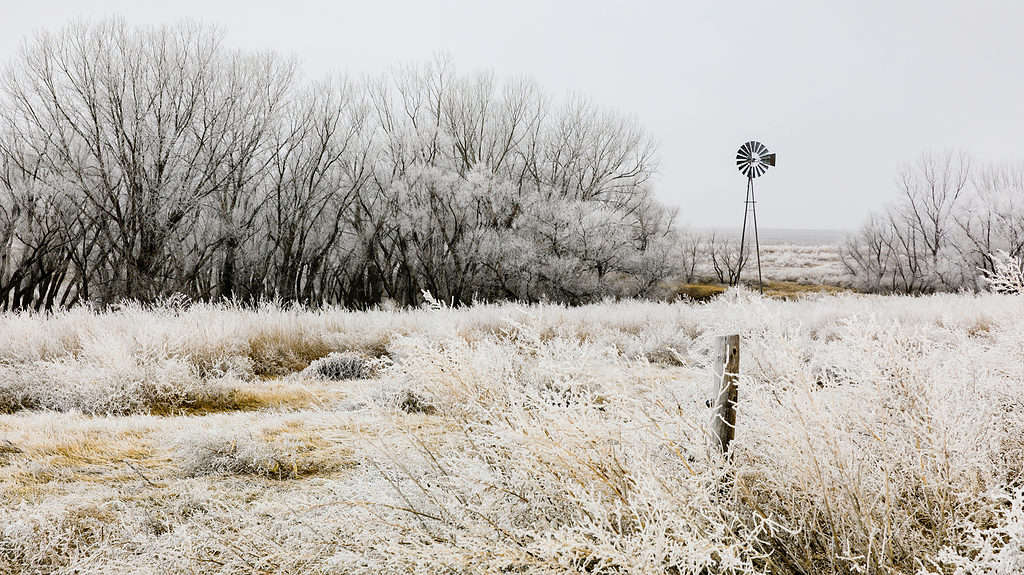
When you’re ready to plant your perennials make sure that the last frost date has passed.
©iStock.com/Marine2844
The USDA Plant Hardiness Zone Map is a guide for farmers and gardeners to determine which plants are suitable for growing in their climate. The average annual minimum temperature of a location determines which of the thirteen hardiness zones it is in. This guide features flowers that fall within the range of zones three through ten, which covers most of the continental United States. The highest and lowest zones have the most challenging growing conditions. Zones one and two have the coldest annual temperatures, and for this reason, perennial flowers generally cannot survive the winter. As for zones 11 through 13, only plants able to tolerate the intense heat of a tropical climate can survive. Most plants that fare well in the continental United States are not suitable for a tropical climate.
Soil Conditions for Perennial Flowers

Fertile soil is able to supply the necessary nutrients and water for the plants to grow.
©Singkham/Shutterstock.com
Soil conditions are another important factor when choosing perennial flowers. Since perennials need to draw nutrients from the soil over several years, they grow best in fertile soil. Fertile soil is able to supply all of the necessary nutrients and water for plants to grow. To check for soil fertility, grab a handful of soil and gently squeeze it. If it loosely holds together, the soil is likely fertile. This soil is known as medium, or loamy. If the soil does not hold together at all, it is light, or sandy. Lastly, soil that clumps together into a tight ball is heavy, or clay soil. Adding organic matter such as compost, leaves, and worm castings can improve the fertility of these soils. However, for gardens with soil that is especially light or heavy, this guide offers some flowers that can tolerate poor soil conditions.
Bloom Time for Perennial Flowers
The final factor to consider when choosing perennial flowers is when you want them to bloom. You may choose to stagger bloom times so that your garden always has a different flower blooming. Another option is to plant flowers that all bloom at the same time for a dramatic display. One consideration to note is that some perennial flowers, if started from seed, will not bloom until their second year.
Perennial Flowers to Plant in May
Now that we have our basic considerations for selecting perennial flowers in mind, here are nine species of perennial flowers to plant in May. We will explore what makes each flower desirable and what time of year it will bloom. Additionally, we will cover care information including the hardiness zone range, soil conditions, pH, shade, and moisture requirements. The flowers are listed from the lowest to highest minimum hardiness zone.
Anaphalis margaritacea ‘Pearly Everlasting’

Pearly everlasting (
Anaphalis margaritacea) is a beautiful perennial flower.
©Olga Ganovicheva/Shutterstock.com
Pearly everlasting is a white perennial flower in the Aster (Asteraceae) family. It grows up to three feet tall by three feet wide. Each plant features many beautiful white flowers. It is found all over Canada, the United States, and northwestern Mexico. Pearly everlasting grows wild and is also cultivated in gardens. The leaves of pearly everlasting are a host to caterpillars for the painted lady butterfly and American painted lady butterfly. Thus, it is a great choice for attracting butterflies to your garden.
Care Information and Bloom Time
- Hardiness zones: 3-7
- Soil conditions: light (sandy) and medium (loamy); can grow in nutritionally poor soil
- pH: mildly acid, neutral, and basic (mildly alkaline)
- Shade: no shade or semi-shade
- Moisture: dry or moist, well-drained soil
- Bloom time: June-September
Aquilegia coerulea ‘Colorado Blue Columbine’
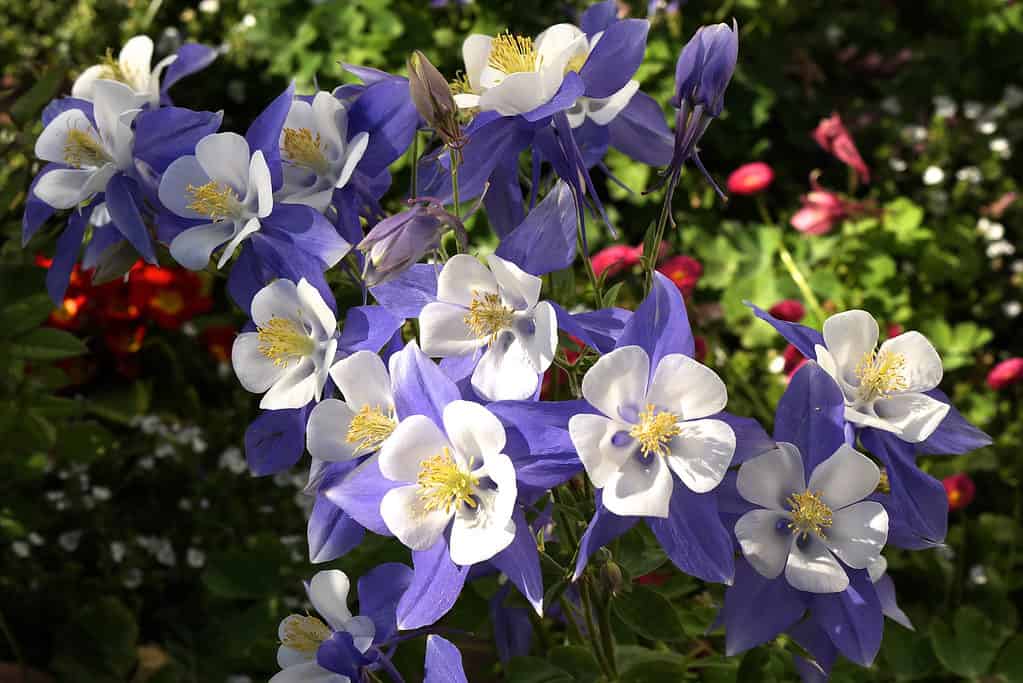
Colorado blue columbine (
Aquilegia caerulea) is a perennial flower native to the Rocky Mountains.
©iStock.com/Linda Jo Heilman
Colorado blue columbine is a stunning purple and white perennial flower in the Buttercup (Ranunculaceae) family, growing up to two feet tall. It is native to the Rocky Mountains of the United States, and is the state flower of Colorado. The Latin name coerulea means “sky blue,” and the distinct color of these flowers evokes the beautiful mountain skies of Colorado. This flower attracts honeybees, which are an important pollinator.
Care Information and Bloom Time
- Hardiness zones: 3-7
- Soil conditions: light (sandy) and medium (loamy)
- pH: mildly acidic, neutral and basic (mildly alkaline)
- Shade: no shade or semi-shade
- Moisture: moist, well-drained soil
- Bloom Time: May and June, later in higher elevations
Hemerocallis fulva ‘Orange Daylily’

Orange daylily (
Hemerocallis fulva) is a perennial flower that grows well in most conditions.
©Oksana Akhtanina/Shutterstock.com
Orange daylily is a perennial flower in the Asphodelaceae family that is native to Asia. It grows up to three feet tall by three feet wide. Contrary to its name, it is not a true lily of the genus Lilium. Orange daylilies are known for being extremely easy to cultivate, growing well even in areas where other plants struggle. Each flower only blooms for one day, but it’s so marvelous you won’t want to miss it.
Care Information and Bloom Time
- Hardiness zones: 3-10
- Soil conditions: light (sandy), medium (loamy), and heavy (clay)
- pH: mildly acidic, neutral and basic (mildly alkaline)
- Shade: no shade or semi-shade
- Moisture: dry or moist soil; can tolerate drought
- Bloom time: May-August
Salvia yangii ‘Russian Sage’
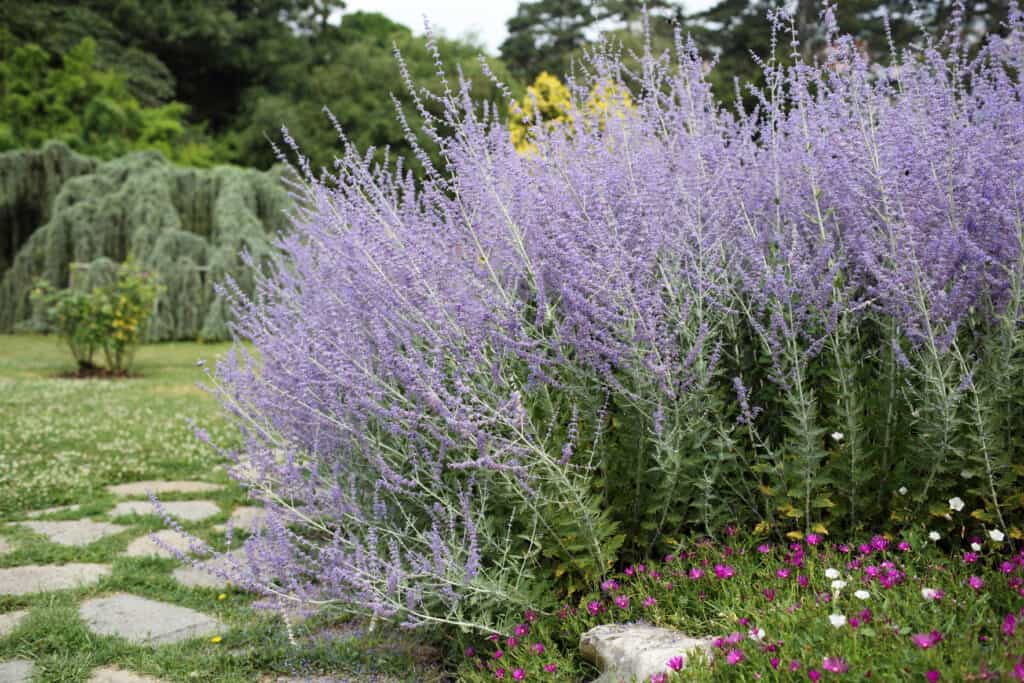
Despite its name, Russian sage actually comes from the steppes and hills of Asia.
©iStock.com/loflo69
Russian sage is a large and beautiful shrub with pastel purple flowers. It can grow up to five feet tall by three feet wide. This shrub is native to southwestern and central Asia, where it is able to grow in a variety of conditions, even in the Himalayas. Russian sage is a great choice for attracting pollinators to a garden and is especially known for attracting bees, butterflies, and hummingbirds.
Care Information and Bloom Time
- Hardiness zones: 3-9
- Soil conditions: light (sandy), medium (loamy), and heavy (clay)
- pH: mildly acidic, neutral, and basic (mildly alkaline); can grow in extremely alkaline soil
- Shade: no shade, cannot tolerate shade
- Moisture: dry or moist, well-drained soil; can tolerate drought
- Bloom time: July-September
Achillea millefolium ‘Yarrow’

Yarrow is a great choice for attracting beneficial insects to any garden.
©Starover Sibiriak/Shutterstock.com
Yarrow is a perennial flower of the Aster (Asteraceae) family. The flowers are commonly white, but there are many cultivars that feature a range of colors. It grows up to two feet tall by two feet wide. Yarrow is native to the temperate regions of Asia, Europe, and North America. It is commonly found in disturbed soil, which is a sign that it is able to thrive in less-than-ideal growing conditions. Yarrow is especially known for attracting beneficial insects and is frequently chosen for butterfly gardens for this reason. Additionally, the common starling uses yarrow to build its nests.
Care Information
- Hardiness zones: 4-8
- Soil conditions: light (sandy), medium (loamy), and heavy (clay); can grow in nutritionally poor soil
- pH: mildly acidic, neutral and basic (mildly alkaline); can grow in very alkaline soils
- Shade: no shade or semi-shade
- Moisture: dry or moist, well-drained soil; can tolerate drought
- Bloom time: April to October
Paeonia anomala ‘Common Peony’

Common peony (
Paeonia anomala) is an incredibly cold-tolerant perennial.
©S.O.E/Shutterstock.com
Common peony is a magenta perennial flower of the Peony (Paeoniaceae) family. This flower grows up to one foot tall by one foot wide. The common peony is native to Siberia, and as a result is very tolerant to cold conditions. Common peony is known for being one of the longest-living perennials found in gardens. If you choose to plant peonies in your garden, you can expect to enjoy them for years or even decades to come.
Care Information and Bloom Time
- Hardiness zones: 4-8
- Soil conditions: light (sandy), medium (loamy), and heavy (clay)
- pH: mildly acidic, neutral, and basic (mildly alkaline)
- Shade: no shade or semi-shade
- Moisture: moist soil
- Bloom time: April-June
Gaillardia pinnatifida ‘Red Dome Blanketflower’
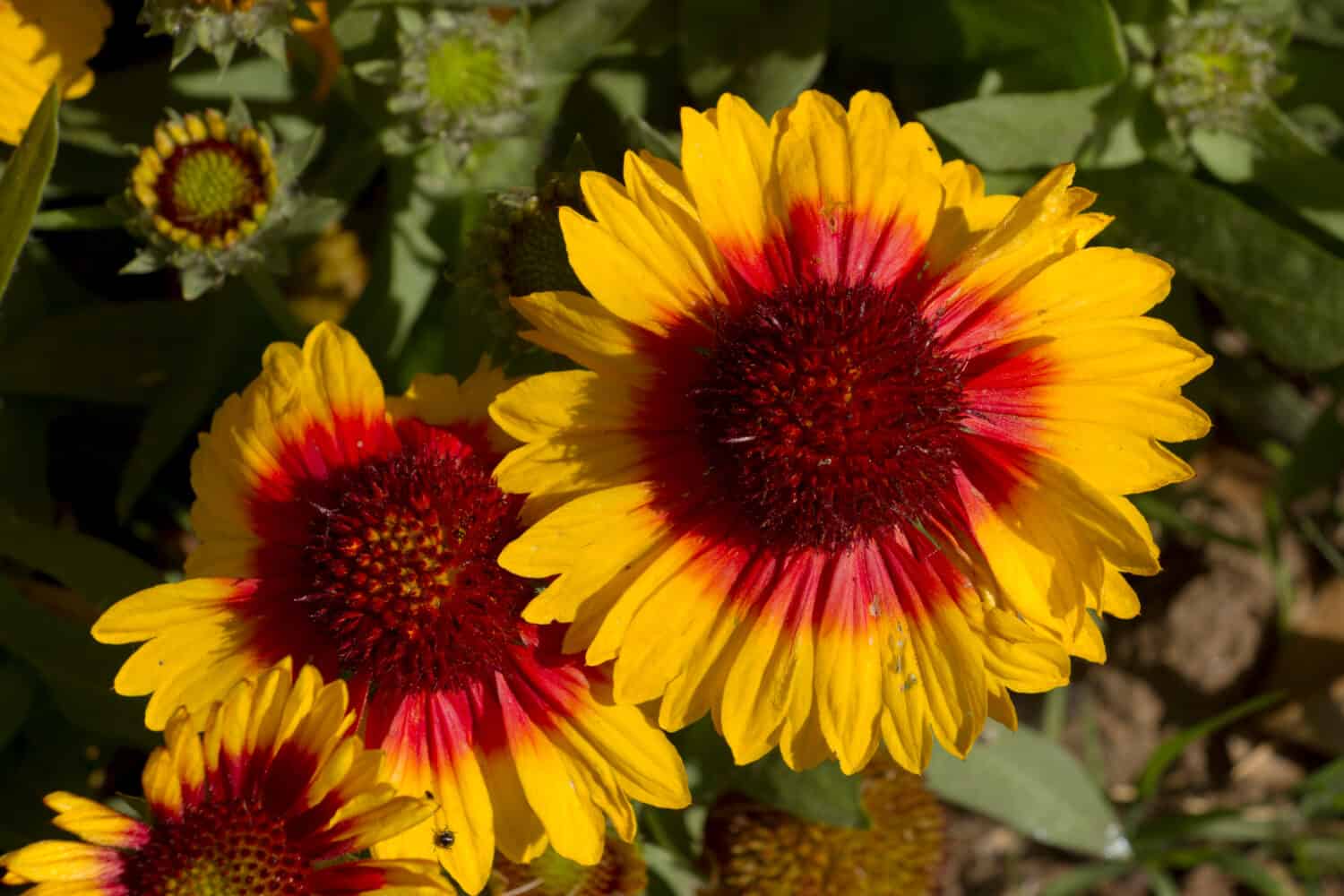
Native to the American southwest, Red dome blanketflower (
Gaillardia pinnatifida) can tolerate extremely hot and dry conditions.
©Nick Greaves/Shutterstock.com
Red dome blanketflower is a yellow perennial flower from the Aster (Asteraceae) family. It is native to northern Mexico and the southwestern United States. These flowers can grow up to one foot tall. Red dome blanketflower is incredibly drought-tolerant and a great choice for gardening in hot, dry areas.
Care Information and Bloom Time
- Hardiness zones: 7-10
- Soil conditions: light (sandy), medium (loamy)
- pH: mildly acidic, neutral, and basic (mildly alkaline)
- Shade: no shade or semi-shade
- Moisture: dry or moist, well-drained soil; can tolerate drought
- Bloom time: July-September
Dahlia x pinnata ‘Garden Dahlia’
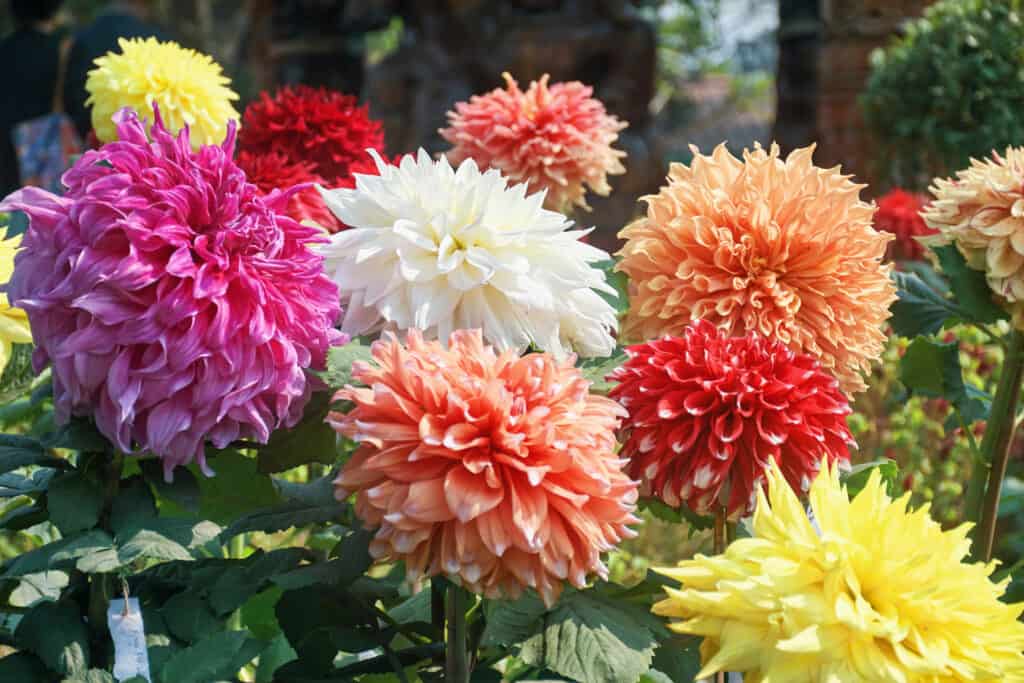
There are thousands of cultivars of Garden dahlia (
Dahlia x pinnata).
©suprabhat/Shutterstock.com
Garden dahlia is a dazzling flower from the Aster (Asteraceae) family. It is native to North America and Central America. These flowers grow up to three feet tall. Markedly, dahlias were cultivated in Central America by Aztec people before the arrival of Europeans. As a result of the dahlia being an important plant for centuries in the region, it is the national flower of Mexico. Another interesting feature of dahlias is that Dahlia genus is incredibly genetically diverse because each plant has two sets of chromosomes rather than just one. As a result, there are dozens of species and thousands of cultivars, so gardeners have a wide array of color options to choose from. All cultivars are perennial at hardiness zones eight and above, but can be grown annually in lower zones.
Care Information and Bloom Time
- Hardiness zones: 8-11
- Soil conditions: light (sandy), medium (loamy), and heavy (clay)
- pH: mildly acidic, neutral, and basic (mildly alkaline)
- Shade: no shade, cannot tolerate shade
- Moisture: moist, well-drained soil
- Bloom time: July-October
Cosmos atrosanguineus ‘Chocolate cosmos’
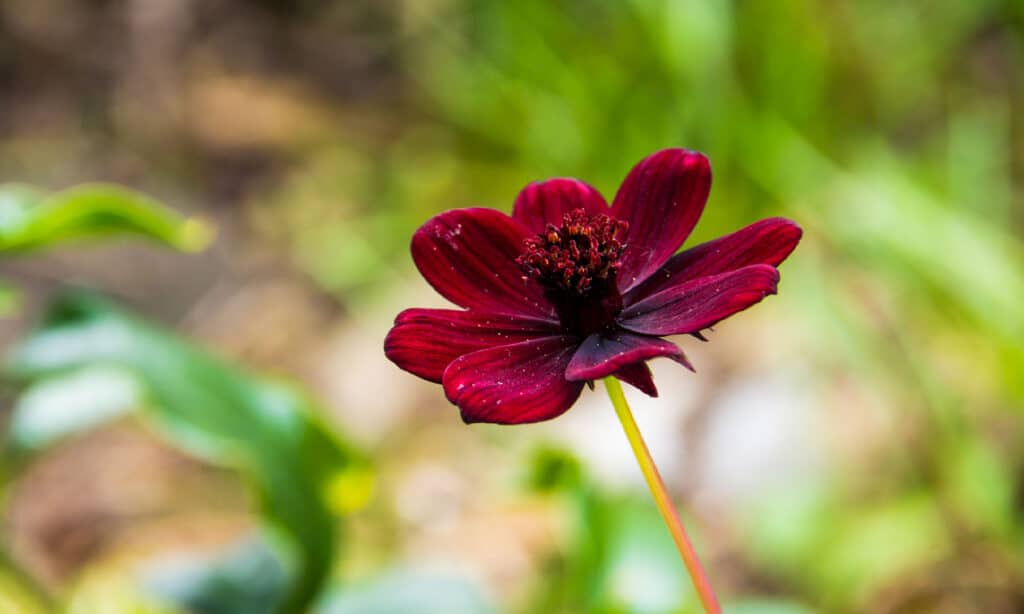
The unique scent of Chocolate cosmos (
Cosmos atrosanguineus) gives this flower its name.
©iStock.com/kinpouge05
Chocolate cosmos are a unique red-brown perennial flower from the Aster (Asteraceae) family. This species is from the Cosmos genus, native to Mexico. Although most flowers in the Cosmos genus are annuals, the chocolate cosmos species is a rare perennial. These flowers grow up to thirty inches tall. One of the most interesting features of this flower is its chocolate fragrance. Certainly, the fragrance of chocolate cosmos paired with its red-velvet cake color make it a unique choice for your garden.
Care Information and Bloom Time
- Hardiness zones: 9-11
- Soil conditions: medium (loamy)
- pH: mildly acidic, neutral, and basic (mildly alkaline)
- Shade: no shade, cannot tolerate shade
- Moisture: moist, well-drained soil
- Bloom time: July-September
Summary of 9 Perennial Flowers to Plant in May
| Number | Perennial Flower | Common Name |
|---|---|---|
| 1 | Anaphalis margaritacea | Pearly Everlasting |
| 2 | Aquilegia coerulea | Colorado Blue Columbine |
| 3 | Hemerocallis fulva | Orange Daylily |
| 4 | Salvia yangii | Russian Sage |
| 5 | Achillea millefolium | Yarrow |
| 6 | Paeonia anomala | Common Peony |
| 7 | Gaillardia pinnatifida | Red Dome Blanketflower |
| 8 | Dahlia x pinnata | Garden Dahlia |
| 9 | Cosmos atrosanguineus | Chocolate cosmos |
The photo featured at the top of this post is © alex172/Shutterstock.com
Thank you for reading! Have some feedback for us? Contact the AZ Animals editorial team.






